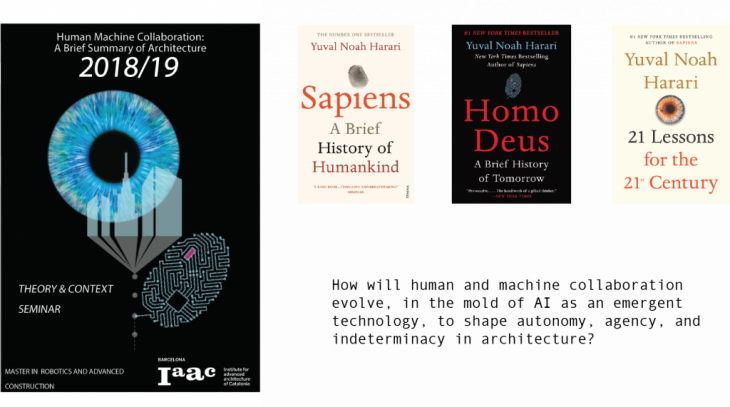How will human and machine collaboration evolve, in the mold of AI as an emergent technology, to shape autonomy, agency, and indeterminacy in architecture?
The contemplation of the human-machine collaboration and its potential in revolutionizing the field of architecture is highly anticipated, discussed, and sought out, yet the exact form and function of it is either in the form of scattered research or novels that fail to collaborate all the viable research; lacking a balance between research and vision to inform the audience. This research connects Architecture and progress in the works of Yuval Noah Harari, to the added insight of future technologies, to speculate the change of humanity is based on Technology so far and study of human habitation and lifestyle as a major means of study; yet it lacks to describe the form and function of human-machine architecture, as compared to, description of technology, capitalism, medicine, anthropology, sociology and many other fields which are agents to help define future architecture.
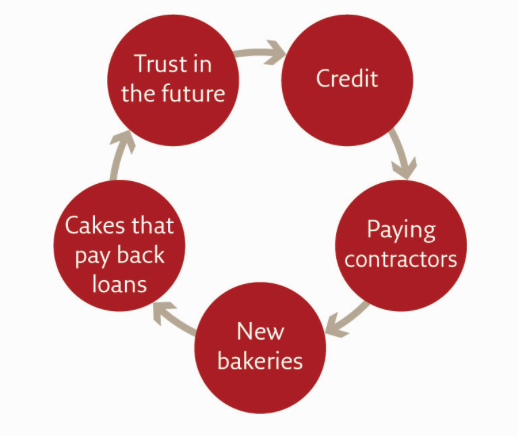
Abstract
Architecture or built forms are a reflection of our activities as they are shaped by them. Deciding where we lead emergent technologies can indicate systemic abilities for goal setting and operational strategy concepts closely associated not only with the performative aspects of architectural interventions but also with the nature of the techniques and tools that produce them. These terms might imply an enhanced relationship between architecture, its inhabitants, and its environment; a complex link between architecture, its production, and its tools; or capacity of architecture to produce new conditions and grounds on which it could be engaged. This issue takes a closer look at artificial intelligence (AI) and human-machine collaboration in architecture.
Application of technology in the AEC industry is undergoing tremendous research but is not outreached as the other fields. One of the main reasons for growth in technology in every other field in comparison to the AEC industry is due to the lack of motivation or collaboration, this is mainly because the plausibility of growing architectural research in making a change is a foreign topic to most common people. Breakthroughs in machine learning and deep learning have produced computational tools capable of interpreting only structured data, bits, pixels, and vectors. These systems are capable of becoming incrementally more robust and autonomous over time as they gather more information reinforcing success and failure.
In other territories, disciplines, and frontiers, AI advances are met with both excitement and trepidation. Their application threatens one of two polemics: augmentation or obsolescence. The possibilities and ramifications for more creative, artistic, or even “human” disciplines—where outputs are not linear or pre-conceived but negotiated and synthesized—are more contested and unknown. The power and potential of such approaches lie in their lack of specificity. The contributions to this explore a spectrum of novel design explorations and exploitations that illustrates the divergence and convergence of human, machine, and mixed agencies at the intersection with adaptivity, adjustable autonomy, and architecture.
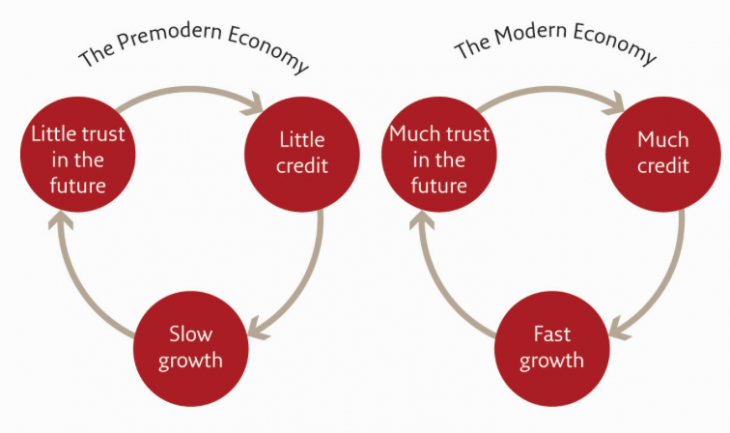
INTRODUCTION
Human History has clearly linked itself, from past 70,000 years, by their activities, technologies and built forms. Thereby, allowing them to evolve themselves and the world around them while leaving behind clear traces of its transition from The Cognitive Revolution – The Agricultural Revolution – The Scientific Revolution. Yet the predictability of the next revolution is linked only by technology, while the activities and built forms are barely linked to a justifiable prediction.
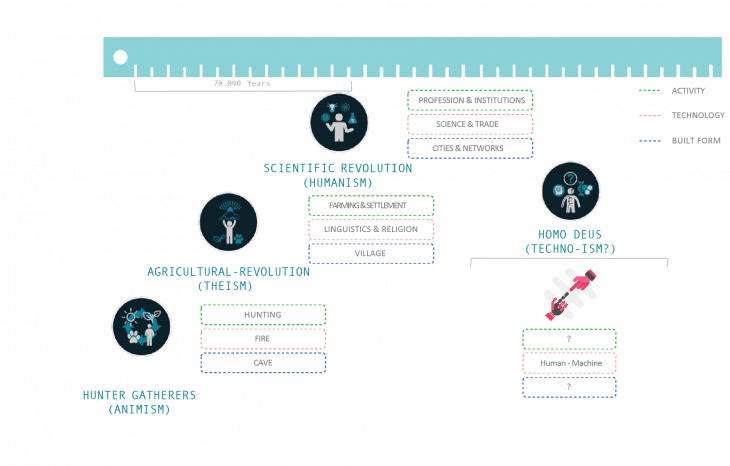
COGNITIVE REVOLUTION / HUNTER GATHERERS
BRIEF FROM THE BOOK
The cognitive revolution, about 70,000 years ago, offered homo sapiens the chance to spread all over the world. As every book says, the major breakthrough was the invention of “fire”. The fire enabled the sapiens to cook food and reduced the amount of energy the human body needed (both to digest food and to withstand cold).
This excess (saved) energy helped the brain to develop further. By then the human brain used more than 25% of body energy and grew drastically; though the brain is just 2-3% of our total body weight, it consumes >20% of our body energy, even today. This larger brain led him more intelligence, imagination, and very important communication.
His communication skills brought in “language”. His imagination gave birth to thousands of stories, religions, and beliefs. All this combined, helped him to grow as a group (society), with a lot of interaction and collaboration between each other. We used this cognitive ability to withstand our dangers and survive better, while the other species were eliminated.
MY INFERENCE
It was the resourcefulness of using the available technology “fire“, sewing, tool making, and many others and apply it to every possible scenario that came along while migrating that ensured the long-lived success of the Sapiens.
ACTIVITY

“Homo sapiens conquers the globe.
{Maps by Neil Gower}”
BRIEF FROM THE BOOK
• For more than 2 million years, the earth was populated with a number of human species, not just one
• 70,000 years ago something began to change: Homo sapiens began migrating out of Africa as they spread out onto the Eurasia land mass, they drove the other human species (e.g. Homo neanderthalensis [Europe], Homo denisova [Asia/Siberia], and Homo soloensis [Java]) into extinction.
• When Homo sapiens first started to migrate to the Middle East 100,000 years ago, they were driven back by the Neanderthals
• 70,000 years ago, Homo sapiens migrated again into and across the Arabian peninsula into the Middle East.• 60,000 years ago reached the area of what is now Korea. 45,000 years ago, Homo sapiens crossed the open sea from Indonesia and landed in Australia.
• Indications that 70,000 years ago something special was happening to Homo sapiens which gave them new abilities.
MY INFERENCE
• There were many species of humans living together at the same time.
• The need for migration leads to the extinction of the other human species.
• Homo sapiens eventually crossed paths with other human species.
• They further migrated to reach Australia after passing through Asia.
• Movement through such large landmasses was only possible through the use and invention of new technologies like fire, boats, tents, and clothes. Exemplifying the co-relation between technology and development/ evolution.
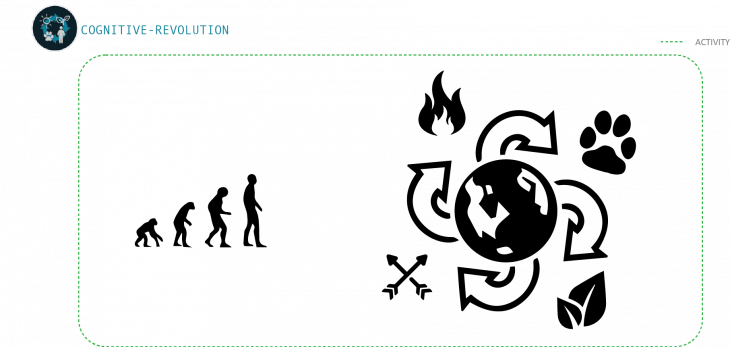
TECHNOLOGY
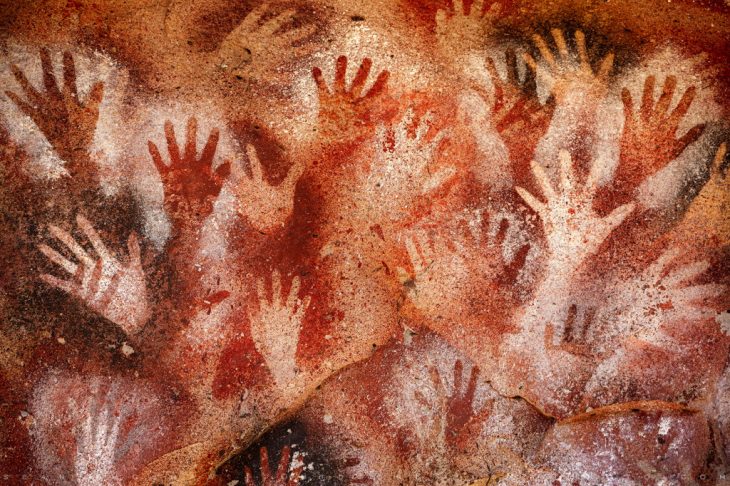
Hunter-gatherers made these handprints about 9,000 years ago in the ‘Hands Cave’, in Argentina. It looks as if these long-dead hands are reaching towards us from within the rock. This is one of the most moving relics of the ancient forager world – but nobody knows what it means.
{© Visual/Corbis.}
BRIEF FROM THE BOOK
• How did humans make the jump to the top of the food chain?
one skill that helped them do this was the domestication of fire
• We know that by 300,000 years ago, some species of humans including the Homo neanderthalensis were using fire on a daily basis, Source of light, Source of warmth, Source of weapons against dangerous animals, Method of hunting and Use fire to encircle and trap animals
• Most important aspect of fire was that it enabled humans to cook
• Many foods that humans cannot digests raw could now be eaten: wheat, rye, rice, and potatoes
• Was able to cross the ocean from Indonesia to Australia, i.e. had developed some kind of sailboat or raft.
• For hundreds of thousands of years up to about 70,000 years ago, all human species (Neanderthal, Sapiens, Denisova, Homo erectus) were all building pretty much the same stone knives, spear points, axes, and hammers without change.
• Lion man of the Hohlenstein Stadel 40,000 years ago oldest known animal-shaped sculpture in the world and one of the oldest known sculptures in general, lion head with the human body, shows that ability for Homo sapiens to imagine things that don’t really exist.
• They learned to make snowshoes and effective thermal clothing composed of layers of furs and skins, sewn together tightly with the help of needles. They developed new weapons and sophisticated hunting techniques that enabled them to track and kill mammoths and the other big game of the far north. As their thermal clothing and hunting techniques improved, Sapiens dared to venture deeper and deeper into the frozen regions. And as they moved north, their clothes, hunting strategies, and other survival skills continued to improve.
MY INFERENCE
• The fire was the most significant tool Sapiens used to not only survive but migrate and dominate the whole world.
• The purposes of fire manifolded in many ways to overcome nature in its many forms, a feat which was impossible for any other organism.
• The invention of cooking opened the spectrum of consumable foods making the agricultural revolution possible.
• Boats and Sails were some of the migratory tools used to access remote places, which were earlier inaccessible to humans.
• Tools such as spheres, knives, and hammers gave Sapiens an additional advantage over bigger prey or disputing human species.
• Sculptures and Jewelry were also an expressive invention that came about from tool making.
• Sewing opened up the possibility of traveling to colder environments with snowshoes and clothing.
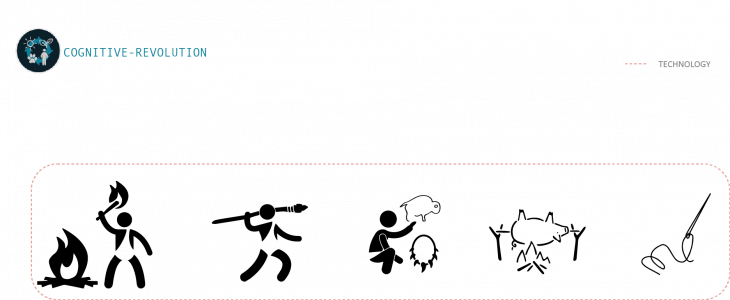
BUILT FORM

An ivory figurine of a ‘lion-man’ (or ‘lioness-woman’) from the Stadel Cave in Germany (c.32,000 years ago).
{Photo: Thomas Stephan © Ulmer Museum.}
BRIEF FROM THE BOOK
• Another very important invention that we begin to see in the archeological record about 40,000 to 50,000 years ago is the needle. This may not strike you as a particularly useful invention but it was one of the most influential inventions in the history of humankind. Before the needle, Homo sapiens and the Neanderthal had rudimentary clothes such as skins of bears or deer, but the needle enabled them to attach materials together, dress in layers, make tents and boots, and thus made it possible to successfully live in colder temperature environments which enabled them within 40,000 years to migrate onto all of the six land continents.
• In Ofnet Cave in Bavaria, archaeologists discovered the remains of thirty-eight foragers, mainly women, and children, who had been thrown into two burial pits.
• The appearance of the oil lamp used animal fat in a container to keep fire lit, enabled Homo sapiens to navigate dark caves as well as create a painting in dark caves.
• The cave paintings in southern France and Spain date to the time that the Homo sapiens arrived in Europe and began replacing the Neanderthals. So the oil lamp was a key to an artistic revolution.
• Humans can choose when and where to light a fire.
MY INFERENCE
• The invention of sewing not only enabled clothes and transport but also the ability to reside anywhere by means of tents.
• Skins of bears or deer were sewn together to form a thick tent in colder habitations.
• Caves were also utilized as means of residence and promoted activities like painting in the caves.
• Oil lamps brought the cave alive at night for Sapiens to socialize.
• Caves also proved to be sites of burial serving as tombs for early humans.
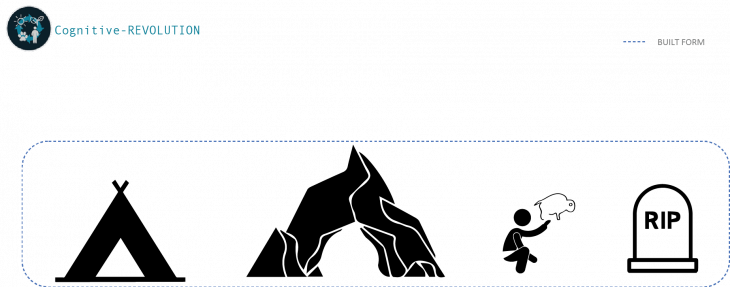
Agricultural Revolution
BRIEF FROM THE BOOK
About 12,000 years ago, humans reduced his efforts to move all over the places for food, instead started domesticated some plants and animals. Most of the crops/animals what we’re eating till now were domesticated during this period. Stable food at one place also led to a stable residence. Villages, towns to cities and kingdoms were formed.
“The Agricultural Revolution certainly enlarged the sum total of food at the disposal of humankind, but the extra food did not translate into a better diet or more leisure. Rather, it translated into population explosions and pampered elites. The average farmer worked harder than the average forager, and got a worse diet in return”
An average man was roughly 5’10” tall and the woman was 5’6” before the agricultural revolution. Then sooner, within 3-4 generations, the average heights dipped to 5’5” for male and 5’1” for female. Many types of research show that it was mainly because of his diet switch from more proteins to carbohydrates, combined with less physical movement.
MY INFERENCE
Agricultural Revolution: the ability to keep more people alive under worse conditions.
ACTIVITY

Locations and dates of agricultural revolutions. The data is contentious, and the map is constantly being redrawn to incorporate the latest archaeological discoveries.
{Maps by Neil Gower}
BRIEF FROM THE BOOK
• Sapiens who lived 30,000 years ago probably had their own share of religious movements, artistic movements, and political struggles invested more and more time in controlling the lives and production of plants and animals
• today’s most popular theory: agricultural life was initiated in different parts of the world at different times independently.
•Evidence that the survival of hunters and gatherers depended on an intimate knowledge of animals they hunted and plants they gathered, so it is not true to think that humans became farmers because they discovered information about animals and plants that they didn’t know before.
•Agricultural life improved humans’ standard of living. Compared with the lives of most peasants, ancient hunter-gatherers enjoyed a freer life, had a better diet, worked fewer hours and spent their time doing more interesting and varied things, and because of their mobility and flexibility, among other factors, they were less in danger of starvation, disease, and human violence.
•who was responsible for the agricultural revolution?
the real culprits were a handful of plant species such as wheat, rye, and potatoes. These plants domesticated human beings for their survival rather than vice-versa.
•10,000 years ago, wheat was just one type of wild grass that grew in some small areas of the Middle East. Within just a view short millennia, you find wheat in almost every area of the world.
• These forfeited food surpluses fuelled politics, wars, art, and philosophy. They built palaces, forts, monuments, and temples. The extra they produced fed the tiny minority of elites – kings, government officials, soldiers, priests, artists, and thinkers. Wheat did it by manipulating Homo sapiens.
MY INFERENCE
• The Agricultural revolution sprouted out sporadically and globally as a transition from the activities, technologies and built forms from the Cognitive Revolution.
• The settlement patterns and the domesticated lifeforms from the choices made by the Sapiens in the past have determined our staple consumption.
• The choice of an Agricultural life civilized the hunter-gatherers to be open to ideas of cooperation which is essential for building communities.
• The seemingly harmless inclusion of wheat into our diet forced us to evolve, can the coming revolution of human-machine collaboration change us as well?
• Though wheat grew scantily, in the beginning, its inclusion in our evolution made it thrive globally. If this is true for a plant what can embrace this technology do?
• The domino effect of such a simple inclusion created the basis for our current day to day life. It formed kingdoms and cities, what would the kingdoms and cities be like when embracing collaboration between human and machine.
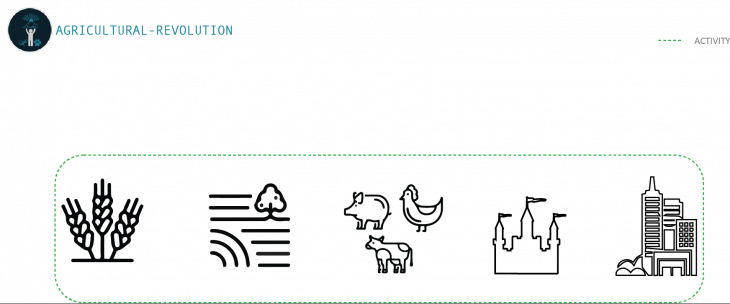
TECHNOLOGY
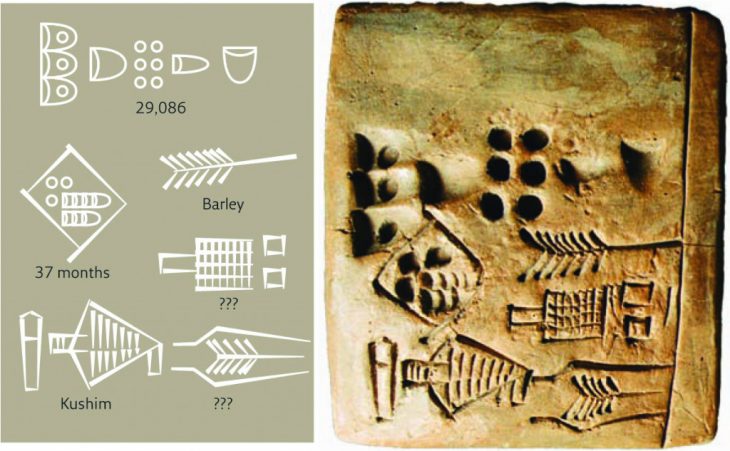
A clay tablet with an administrative text from the city of Uruk, c.3400–3000 BC. ‘Kushim’ may be the generic title of an officeholder, or the name of a particular individual.
{© The Schøyen Collection, Oslo and London, MS 1717.
http://www.schoyencollection.com/.}
BRIEF FROM THE BOOK
• The Natufians invented new tools such as stone scythes for harvesting wild wheat, and stone pestles and mortars to grind it.
• The only way to build Göbekli Tepe was for thousands of foragers belonging to different bands and tribes to cooperate over an extended period of time. Only a sophisticated religious or ideological system could sustain such efforts.
• Transportation, plowing, grinding and other tasks, hitherto performed by human sinew, were increasingly carried out by animals.
• In many New Guinean societies, the wealth of a person has traditionally been determined by the number of pigs he or she owns.
• Stories about ancestral spirits and tribal totems were strong enough to enable 500 people to trade seashells, celebrate the odd festival, and join forces to wipe out a Neanderthal band.
• Myths – opened opportunities for the creation of crowded cities and mighty empires, people invented stories about great gods, motherlands and joint stock companies to provide the needed social links.
• While human evolution was crawling at its usual snail’s pace, the human imagination was building astounding networks of mass cooperation, unlike any other ever seen on earth.
• In 221 BC the Qin dynasty united China, Taxes levied on 40 million Qin subjects paid for a standing army of hundreds of thousands of soldiers and a complex bureaucracy that employed more than 100,000 officials.
• The Babylonian king most famous today was Hammurabi. His fame is due primarily to the text that bears his name, the Code of Hammurabi. This was a collection of laws and judicial decisions whose aim was to present Hammurabi as a role model of a just king, serve as a basis for a more uniform legal system across the Babylonian Empire, and teach future generations what justice is and how a just king acts.
• Writing is a method for storing information through material signs. The Sumerian writing system did so by combining two types of signs, which were pressed in clay tablets.
MY INFERENCE
• The Agricultural revolution would have never been a successful task if the technology did not support it.
• Religion was one of the inventions which helped in bringing people to collectively start a settlement.
• Capitalizing on the domesticated lifeforms also served in the favor of spreading and speeding up of the Agricultural revolution.
• As these domesticated life forms were the primary bringers of resources and locomotion they were naturally perceived as wealth. This further grew down to the system of money which exists for all trade today.
• Stories served as an extension of imagination required for trade and conquest.
• Myths further enhanced cooperation amongst millions of strangers and built communities.
• The imagination of using the existing resources into farms, settlements, kingdoms, and cities, has been the potential for growth.
• Taxes were an invention that kept the functioning system going and funded growth lawfully.
• Writing perhaps is the most important form of data preservation that ensured an accurate translation of knowledge.
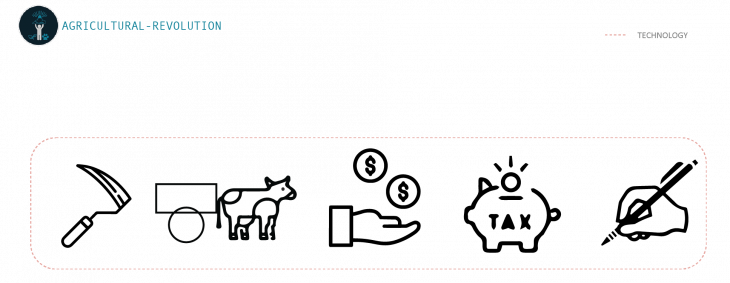
BUILT FORM
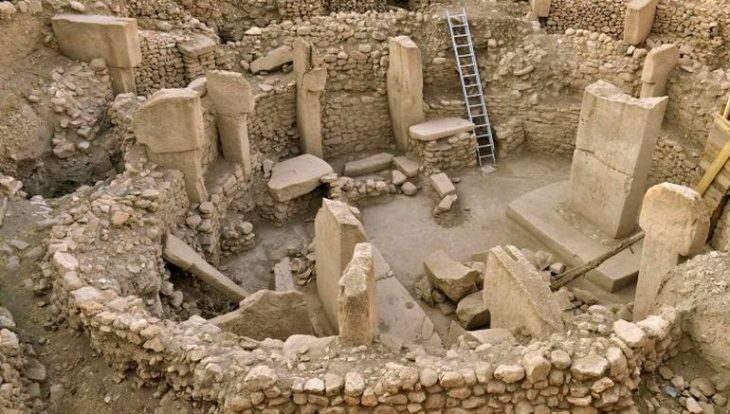
The remains of a monumental structure from Göbekli Tepe. Bottom: One of the decorated stone pillars (about sixteen feet high).
{Photos and © Deutsches Archäologisches Institut.}
BRIEF FROM THE BOOK
• The word “domesticate” comes from the Latin word “Domus” which means house.
• Wheat was attacked by rabbits and locust swarms, so the farmers built fences and stood guard over the fields. Wheat was thirsty, so humans dug irrigation canals or lugged heavy buckets from the well to water it.
• In time, human violence was brought under control through the development of larger social frameworks – cities, kingdoms, and states. But it took thousands of years to build such huge and effective political structures.
• The Natufians were hunter-gatherers who subsisted on dozens of wild species, but they lived in permanent villages and devoted much of their time to the intensive gathering and processing of wild cereals. They built stone houses and granaries. They stored grain for times of need.
• In 1995 archaeologists began to excavate a site in south-east Turkey called Göbekli Tepe. They did, find monumental pillared structures decorated with spectacular engravings. Each stone pillar weighed up to seven tons and reached a height of sixteen feet.
• the best-known example is Stonehenge in Britain. Yet as they studied Göbekli Tepe, they discovered an amazing fact. Stonehenge dates to 2500 BC and was built by a developed agricultural society.
• They spent most of their days working a small field or orchard, and their domestic lives centered on a cramped structure of wood, stone or mud, measuring no more than a few dozen feet – the house.
• The food surpluses produced by peasants, coupled with new transportation technology, eventually enabled more and more people to cram together first into large villages, then into towns, and finally into cities, all of them joined together by new kingdoms and commercial networks.
MY INFERENCE
• The house served as the primary point for shelter and self-restoration.
• Irrigation systems and water conduits were built to enable societies to form communities. This transpired into kingdoms and cities.
• The enablement of communities transpired into cities, kingdoms, and states, on the basis of governing systems.
• Storage systems further increased the success of a settlement by further increasing the resources needed to grow.
• Religious buildings were the founding dogma around which communities formed. Thereby invoking a chain of hierarchy needed to grow into larger settlements.
• Larger villages, towns, and cities were a product of successful trade, commerce, and networking, organized by a governing body.
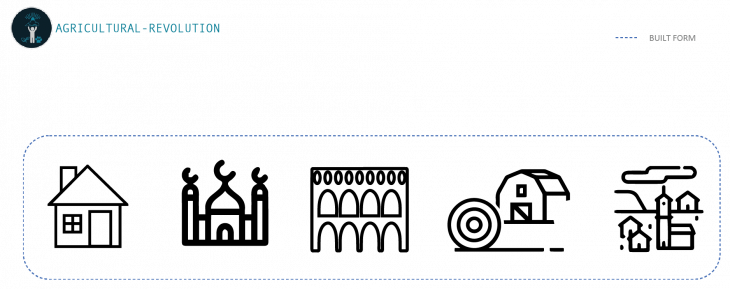
SCIENTIFIC REVOLUTION
BRIEF FROM THE BOOK
Till the year 1500, human’s acquaintance to objective science was quite confined. Till the 15th century, no human had even dreamt of circumnavigating the earth, but this changed when Magellan successfully returned to Spain in 1522. Prior to the year 1500s, he just believed that the sky is only for the birds and angels. But he broke his own beliefs on 20 July 1969, by entering into the moon.
During the last five centuries, humans increasingly came to believe that they could increase their capabilities by investing in scientific research. This wasn’t just blind faith – it was repeatedly proven empirically by many historical technology milestones from engineering to medicine.
On the other extreme, he started pushing science and technology on war and nuclear bombs; started making strides in biotechnology by modifying the genes of vegetables and animals, with no clear boundary of what is good and what is forbidden to do. He keeps trying to change things with mortality, by cloning and Artificial Intelligence.
MY INFERENCE
The Scientific Revolution for its mitigation and inclusion of every development in all fields of activity, technology, and built form, has created a model which can harmoniously support and grow everyone into the next era.
ACTIVITY
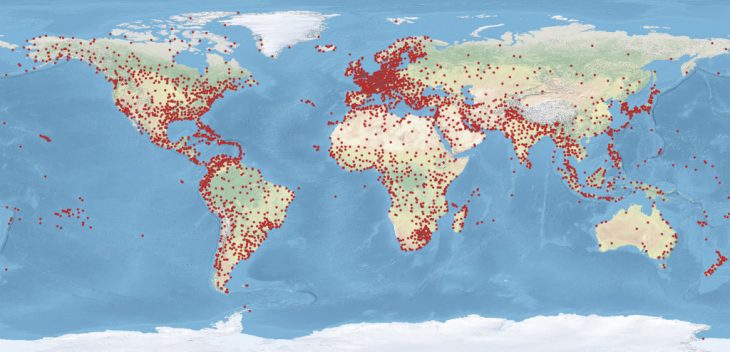
Global Transport Database
BRIEF FROM THE BOOK
• The Industrial Revolution gave humankind control of enormous sources of energy and raw materials.
• The energy resources available to humankind are actually increasing all the time and are likely to continue to do so.
• The human population has been growing exponentially for centuries, while humans are becoming increasingly free from the forces of nature, we are becoming increasingly subject to the forces of industry and government
• The industrial revolution opened the way to a long line of changes and experiments in social engineering, how humans live together in large groups
• Modern industry cares far less about the sun and the seasons and far more about uniform schedules that don’t change from one season to the next.
• In the following years, more and more institutions adopted Greenwich time as the official time.
• The rise of cities and kingdoms and the improvement in transport infrastructure brought about new opportunities for specialization. Densely populated cities provided full-time employment not just for professional shoemakers and doctors, but also for carpenters, priests, soldiers, and lawyers.
• The Scientific Revolution’s feedback loop. Science needs more than just research to make progress. It depends on the mutual reinforcement of science, politics, and economics. Political and economic institutions provide the resources without which scientific research is almost impossible. In return, scientific research provides new powers that are used, among other things, to obtain new resources, some of which are reinvested in research.
• There are very few scientific disciplines that did not begin their lives as servants to imperial growth and that do not owe a large proportion of their discoveries, collections, buildings, and scholarships to the generous help of army officers, navy captains, and imperial governors.
MY INFERENCE
• The industrial revolution with its growth Institutionalised to give way to the resources needed to make the current world scenario possible.
• With the institutions seeking profitability are growing the available resources to be used for the future.
• The institutions that govern (government and industry) have a remarkable hold on progress and is almost unavoidable.
• But the institutionalization has made it possible for the population to socially carry out trade and commerce.
• The method adopted by institutions is global for anyone who wishes to participate and its workability is synchronous with everyone.
• The standardization of Greenwich time has made it possible for all institutions to be synchronous and prosperous globally. eg. Global Transport.
• Individual Professions would not have worked harmoniously on a global scale if shoemakers, doctors, carpenters, priests, soldiers, and lawyers could not do their part in a grand scheme of capitalism.
• The Scientific Revolution is by far the biggest contributor to Professions and Institution, as it gives the potential design and creates new future scenarios. Wherein a successful synergy between the systems is required to fuel research.
• Professions that may have seen to be separate from the Scientific Revolution are slowly immersing themselves, indicating the technology is the inevitable way forward.
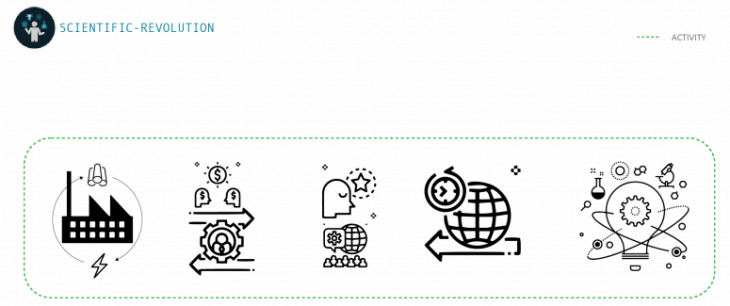
TECHNOLOGY
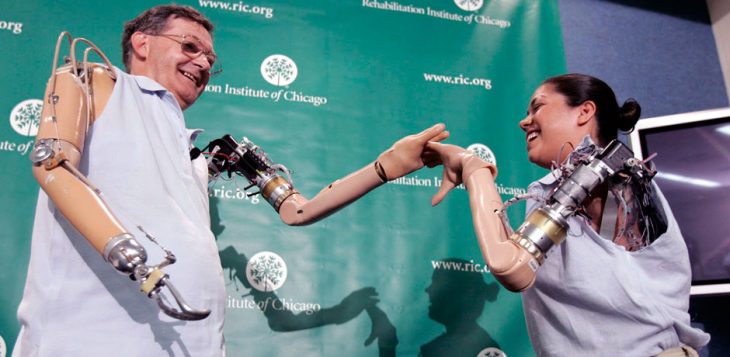
Jesse Sullivan and Claudia Mitchell holding hands. The amazing thing about their bionic arms is that they are operated by thought.
{© ImageBank/Getty Images Israel.}
BRIEF FROM THE BOOK
• Robots and 3D printers are already replacing workers in manual jobs such as manufacturing shirts, and highly intelligent algorithms will do the same to white-collar occupations.
• Robots and computers have no consciousness because despite their myriad abilities they feel nothing and crave nothing. Throughout this process, the robot doesn’t experience anything. In contrast, a human being depleted of energy feels hunger and craves to stop this unpleasant sensation.
• Cyborg engineering combining organic and inorganic parts such as a human with bionic hands.
• In a sense, all of us are cyborgs today since our natural senses and functions are supplemented and improved by eyeglasses, pace-makers, synthetic teeth, plastic hips, or metal screws in our joints
• However, in the future, this process is likely to go much further. We are likely to have inorganic devices connected directly to our brains and our nervous systems, devices that will become inseparable from us and that will change our abilities, desires, personalities, and identities.
• the bionic ear over 300,000 people already have bionic ears (cochlear implants) [KOK-lee-er]
• 2008 experiment: Monkey in North Carolina controlled robot legs in Japan over the Internet
• Software is being created that evolves independently of the creator of the program
• Are non-organic, evolving viruses life?
it depends how you define life, but this is a new pathway for evolution to create new phenomena in our real world which affect us and which we can predict only with difficulty, and which is completely independent of the organic world and its limitations
• 2005 Blue Brain Project goal is to recreate a brain inside a computer.
• Watson will be intimately familiar not only with my entire genome and my day-to-day medical history but also with the genomes and medical histories of my parents, siblings, cousins, neighbors, and friends.
MY INFERENCE
• Industry 4.0 is the product of the Scientific Revolution and its acceptance is setting trends and indicating more radical changes to the economy.
• A culmination of Robots and humans is giving way to a world of human-machine collaboration.
• Cyborg engineering being humans using non-organic tools enhance their abilities like bionic arms can enhance lost limbs.
• Further development of this in terms of human-machine collaboration enables one to control robots anywhere from the internet. There is no reason why our future limbs will need to be in the same room as our bodies.
• Direct Neural synapses are another technological paradigm that will not only change the way we use technology but will also change us.
• The possibility of Software evolving uncredited to its initial program is what makes Artificial Intelligence promising.
• Computer Viruses are an excellent example of Artificial Intelligence because unannounced to the user the software evolves and updates despite regular anti-virus attempts.
• Creating complete consciousness within a computer is what is being sought out, the worm project is one of the few successful projects that managed the recreate the brain of a certain worm in software.
• A consciousness with access to our information online will be able to create more efficient communal solutions.
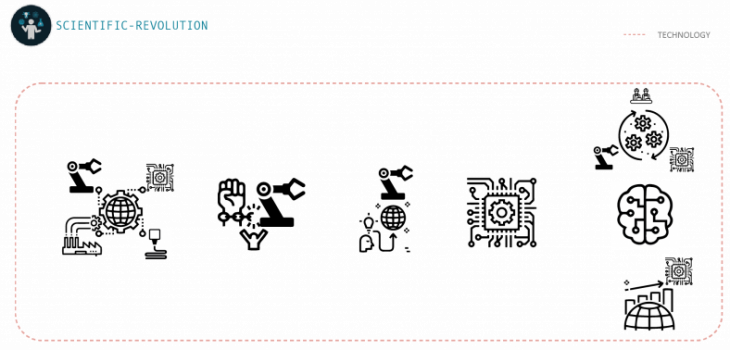
BUILT FORM

Frank Gehry’s Incredible Louis Vuitton Foundation
{Image via LVFC}
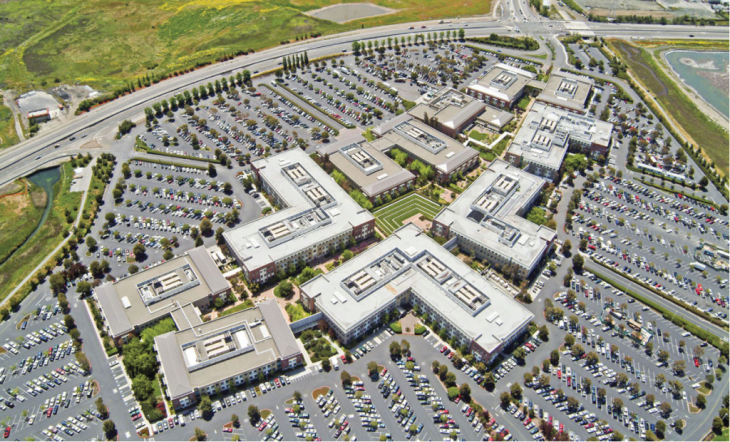
Facebook’s headquarters near San Francisco.
{© Proehl Studios/Corbis.}
BRIEF FROM THE BOOK
• This liberated humankind from its dependence on the surrounding ecosystem, humans could now: lay down tens of thousands of kilometers of roads and railroad tracks, build new and giant cities.
• A crucial link in the spreading of time schedules was public transportation.
• The industrial revolution gave humankind control of enormous sources of energy and raw materials.
• States are increasingly open to the machinations of global markets, to the interference of global companies and NGOs, and to the supervision of global public opinion and the international judicial system. States are obliged to conform to global standards of financial behavior, environmental policy, and justice. Immensely powerful currents of capital, labor, and information turn and shape the world, with a growing disregard for the borders and opinions of states.
• The knowledge produced by this research has made possible the construction of nuclear power stations, which provide cheap electricity for American industries, which pay taxes to the US government, which uses some of these taxes to finance further research in nuclear physics.
•Over the centuries, science has offered us many new tools. Even more important are technological tools. The connection forged between science and technology is so strong that today people tend to confuse the two.
• Markets and states do so by fostering ‘imagined communities’ that contain millions of strangers, and which are tailored to national and commercial needs.
• The temples of Enki and Inanna dominated the Uruk skyline, and their divine logos branded buildings, products, and clothes. For the Sumerians, Enki and Inanna were as real as Google and Microsoft are real for us. Compared to their predecessors – the ghosts and spirits of the Stone Age – the Sumerian gods were very powerful entities.
MY INFERENCE
• All built forms are distinguishable from each other and their function can fairly be predicted by a mere glance.
• Transport routes enabled the formation of giant cities – polis and megapolis.
• Transportation is the main facilitator to the success of cities. Hence has dedicated built forms to station and function itself.
• The construction of structures to provide energy, renewable and non-renewable, gave the means for any technology to rise.
• Companies and Businesses that house the wheel of commerce have distinguishable features from previously invented houses.
• Structures relating to research and education function have been developed to fuel the Scientific Revolution and in turn, it further facilitates the economy.
• Technological giants have huge computers tor storage of data cloud or otherwise.
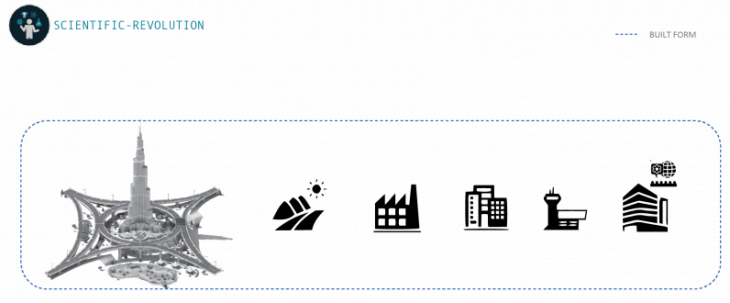
HUMAN-MACHINE COLLABORATION
ACTIVITY
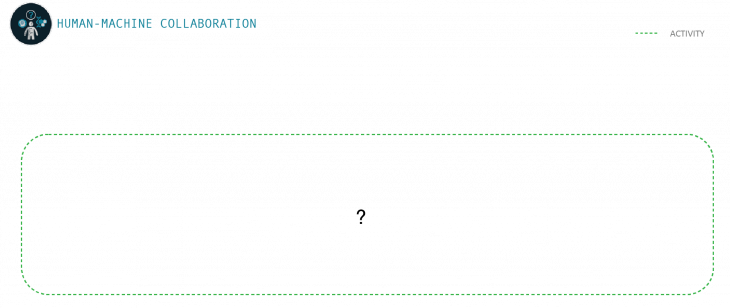
TECHNOLOGY
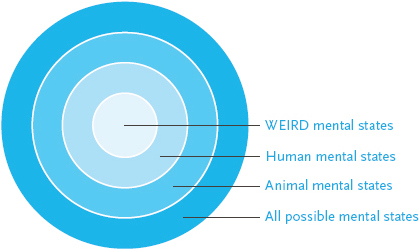
BRIEF FROM THE BOOK
• Perhaps most importantly, artificial intelligence and biotechnology are giving humanity the power to reshape and re-engineer life.
• Zuckerburg further explained that ‘We started a project to see if we could get better at suggesting groups that will be meaningful to you. We started building artificial intelligence to do this. And it works. In the first six months, we helped 50 percent more people join meaningful communities.’
• By 2050 AI can code software far better than humans, and a new Google Translate app enables you to conduct a conversation in almost flawless Mandarin, Cantonese or Hakka, even though you only know how to say ‘Ni hao.’
• But all jobs demanding this level of artistic creation might be taken over by AI.
• AI revolution is fuelled by breakthroughs in the life sciences and the social sciences as well as predicting human decisions, and replacing human drivers, bankers, and lawyers
• 10 billion AI doctors in the world – each monitoring the health of a single human being – you can still update all of them within a split second, and they can all communicate to each other their feedback on the new disease or medicine
• the replacement of human pilots by drones have eliminated some jobs but created many new opportunities in maintenance, remote control, data analysis, and cybersecurity.
algorithms are becoming the most important buyers of bonds, shares, and commodities. Similarly, in the advertisement business, the most important customer of all is an algorithm: the Google search algorithm.
• The Zara and Prada stores on Fifth Avenue could be replaced by 3-D printing centers in Brooklyn, and some people might even have a printer at home.
MY INFERENCE
• Human-machine collaboration enables the potential to reimagine the existing methodologies.
• Sharing data over social media platforms enables more meaningful communities on the basis of peoples main interests.
• The algorithms can rewrite their initial code to have a more real application with human culture diversifying. Understanding and translating between different languages.
• Creation of Art, music or paintings is on the basis of algorithms and the interpretation by AI could change our perception of these topics.
• The adaptation of AI is possible in any field following an algorithmic logic, be it driving, lawyer, banks, etc and would update itself with any information through all fields inclusive of sciences and social sciences.
• The field of medicine revolutionized by the inclusion of AI with all the backing from big data. A person’s vitals can be monitored from existing technology and actions performed on a patient will be based on the constant update of data and also all existing data on medicine and its implementation.
• Clothing industry will probably have to undergo major alterations as the fashion industry is inching towards printed wearables. Companies could sell printing logic rather than the product itself, saving tremendously on transport and resources.
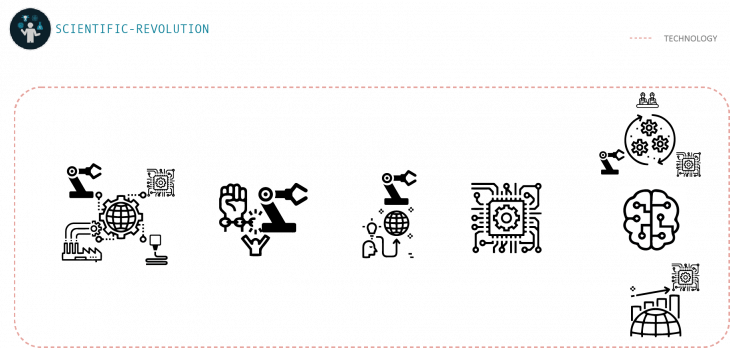
BUILT FORM
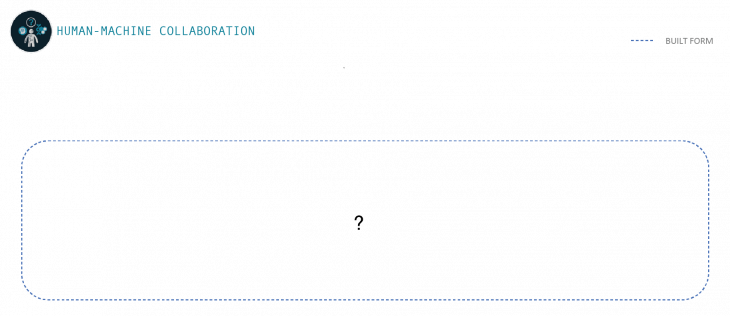
LINKING PROGRESS
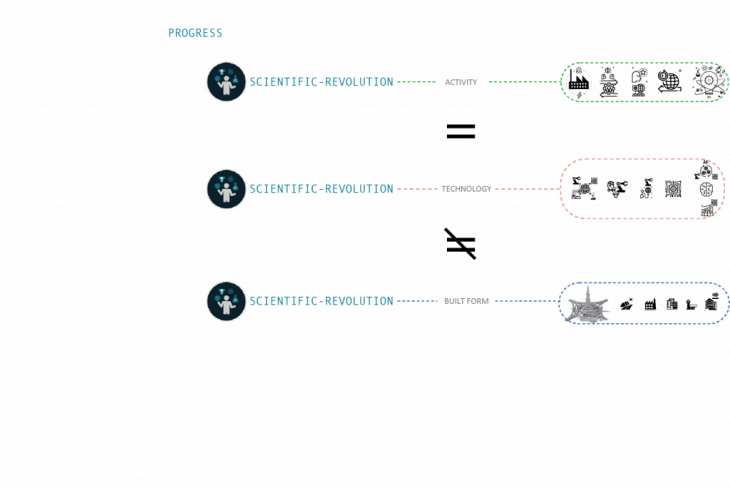
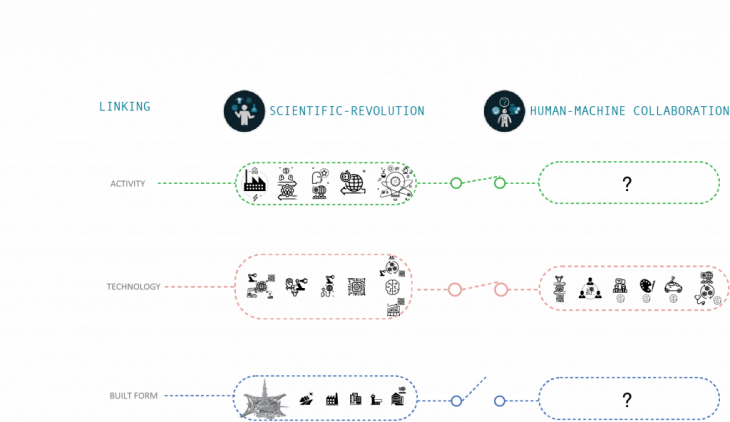
Diagram representing the linking and non-linking of information that could be passed from the Scientific Revolution onto Homo-Deus Revolution by means of Human- Machine collaboration.
CONCLUSION
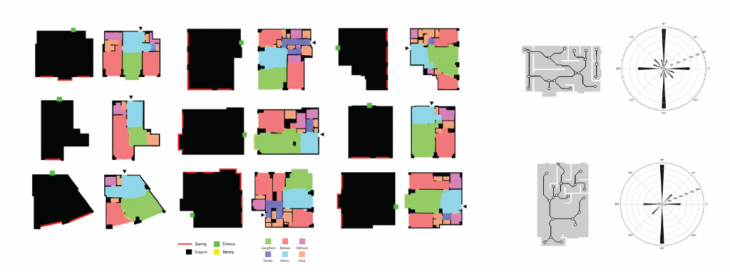
Generated Program & Fenestration | Source: AI & Architecture, Stanislas Chaillou
AI will soon massively empower architects in their day to day practice. As such potential is about to be demonstrated, works such as AI & Architecture, Stanislas Chaillou participates to the proof of concept while the framework offers a springboard for discussion, inviting architects to start engaging with AI, and data scientists to consider Architecture as a field of investigation. Furthermore, the manifesto could be summarized in four major points.
Conceptually first, a statistical approach to design conception shapes AI’s potential for Architecture. Its less-deterministic and more-holistic character is undoubtedly a chance for our field. Rather than using machines to optimize a set of variables, relying on them to extract significant qualities and mimicking them all along the design process from the vast records of not only the built forms but also the circumstances will be a paradigm shift.
Second, it will be essential to design the right pipeline that will condition AI’s success as a new architectural toolset. The linking between emergent technologies and its possible architectural implication must synonymously update.
Third, the sequential nature of the application can facilitate its manageability and foster its development.
Finally, an open framework will help address the endless breadth and complexity of the models to be trained and those used in any generation pipeline.
Far from thinking about AI as the new dogma in Architecture, we conceive this field as a new challenge, full of potential, and promises. We see here the possibility for rich results, that will complement our practice and address some blind spots of our discipline.
